Leisure has become a staple of shopping destinations as developers and retailers realise its effect on footfall. Matthew Valentine explores the evolving leisure-retail mix in shopping centres and on the high street
From the ‘male crèche’ of the nearest public house to a place to entertain bored children or feed tired parents, retailers have long known that convenient leisure facilities can extend and enliven shopping visits. But the standard of leisure offers required to make a retail destination stand out is evolving fast, and arguably there is more rapid development than the shops they complement.
Lend Lease’s Bluewater development in Kent is now more than a decade old, and has included a leisure offer alongside its shops from the beginning. The centre houses an Odeon cinema and a growing selection of restaurants and bars alongside some less conventional leisure facilities. “We have a 36-hole golf course here. We’ve got the lakes, the fishing, the boats,” says Bluewater general manager Robert Goodman. There is certainly no shortage of variety.
Goodman describes the centre as having retail anchors, catering anchors and leisure anchors – and says it is the catering and leisure offers that have seen the biggest changes since Bluewater opened. This has included a rapid expansion and growing sales from the various restaurants at the centre, with many more premium outlets now trading. And with the opening last year of Glow, a 55,974 sq ft events space, Bluewater has taken its leisure offer to a new level.
Events including wedding fairs and The Baby & Toddler Show have already been hosted at Glow, making it a destination for varied customer groups, some of them new to the mall. “Among the interesting findings from some of the events we’ve been running, for example, was that with BBC Good Food we attracted guests who had not been to Bluewater before,” says Goodman.
Unique appeal
The Wedding Fair in September attracted more than 150 exhibitors and high numbers of visitors, many of whom visited Bluewater’s shops and restaurants. Calum Taylor, managing director of organiser Mercury Events, explains the offers a unique appeal. “Unlike almost any other venue in the country, it has a fantastic complementary offer in the restaurants and shops that Bluewater provides,” he says.
Live sports are the next leisure development on the agenda at Bluewater. Olympic boxing champion James DeGale MBE last month defeated his French rival in one of a series of boxing events scheduled at Glow. Like the cinema, these events will help to maintain high footfall levels into the evening.
Retail venues in town and city centres might not have the luxury of space that centres such as Bluewater can offer, but they do benefit from adjacent leisure facilities, which can significantly enhance their appeal as destinations if managed efficiently.
Connected offer

Miles Dunnett, head of asset management for the Grosvenor Liverpool One Fund, says that from the perspective of a landlord it is important to ensure attractive leisure opportunities are included in any planning and development. Recalling his own experience, he says: “But before we got to that, we put an awful lot of importance on the city centre perspective too, in making sure that the way the scheme was delivered connected to the other parts of the offer around the city.”
Liverpool One already hosts 35 restaurants and has submitted planning applications to create more by turning some A1 units over to A3 use, says Dunnett: “We also have on our doorstep the Albert Docks with, at one extreme, the Beatles Tour, the Beatles Story and the Duck Tour and, at the other, Tate Liverpool. So, as far as a leisure offer goes they were easy wins for us. As long as we recognised the fact that people wanted to come into the city if the total offer of the retail matched the leisure, and yes, we introduced our own leisure too, then that would make it [Liverpool One] attractive.”
Research shows that the combined retail and leisure offer really has paid off in terms of consumer appeal. The centre brings shoppers from a catchment area that extends to a travel time of about 80 minutes, a distance that provides a possible catchment of 4.1 million people. While 55% of shoppers polled by Liverpool One said it was their destination of choice because of the selection of retailers, 45% said there were additional reasons for their decision to go there. “That’s nearly 50% of our customer base saying they have made an explicit choice in their mind, that Liverpool is the place they want to be when they are shopping, but it is not exclusively because of the shops,” says Dunnett.
The centre claims its catchment has grown by 27% since 2010, and achieved a 10% increase in sales during 2011. Sales have risen by 2.3% so far in 2012, and stores at Liverpool One have traded 26% ahead of the UK average.
The centre is dedicated to constantly refreshing the stores on offer to make sure it provides shoppers with the best range. But it acknowledges that to attract those who have bypassed more convenient shopping locations to get there it must also consider the wider picture. “We invest a lot more time now than we envisaged five years ago in thinking, ‘what can we provide that makes this an engaging place to be?’” says Dunnett. Part of that approach is working more closely with the city to develop the overall retail-leisure mix.
Close links
Association of Town Centre Managers chief executive Martin Blackwell is another supporter of close links between stakeholders in any area. Landlords, retailers, leisure operators and local authorities should all be involved in strategic decisions on how to develop venues, he says. If that is the case, then he believes that leisure facilities can help retailers to thrive.
“At Westfield’s new Stratford centre, a quarter of all the units are not retail. It is about leisure, food and drink largely, but that’s the highest proportion I have seen and I think it is a really good illustration of the way things are moving,” says Blackwell.
Retailers are responding positively to the growing leisure offer at many retail destinations. Indeed, for some, leisure is already a core component of their own offers and supporting facilities have a big impact on the sites they choose. Build-A-Bear Workshop was created with the objective of entertaining customers while they created their own personalised teddy bears. “The difference between Build-A-Bear and most retailers is that you can’t really shop it without there being good engagement between associate and guest. We see it as an interactive retail experience,” says the company’s UK managing director, Roger Parry. He adds that the retailer actively seeks out sites that offer enhanced leisure opportunities from other companies.

“We do look for those kinds of locations, and if you look at our portfolio of 60 stores you will see that we are in a lot of locations that meet that description. Certainly for us, because on average a customer will spend about 50 minutes to an hour making their bear, we have to be in a good leisure environment. People have to be able to give a decent amount of dwell time. Our core guests, if I had to sum them up, would be families coming out for half a day, or a day, where they can shop, eat and maybe take in a movie,” says Parry.
Reasons to be cheerful
Build-A-Bear works closely with shopping centre management teams to identify more reasons for families to make leisure-based visits. Personal appearances by relevant celebrities, with CBeebies presenter Justin Fletcher a favourite, and Pudsey Parties, to support Children in Need, are examples of the kind of activities that work well for the retailer.
Entertaining customers will remain a key objective for Build-A-Bear, which is in the process of launching a six-store US trial of its ‘store of the future’ format. “The first store was opened three weeks ago. That is in West County Centre in St Louis, Missouri, and another one opened in California last week,” says Parry. “And there are six stores that will all be open in the next couple of weeks. Those six stores form the basis of the trial.”
The new design features more interactive elements and a lot of new technology to entertain customers, he says, and will be rolled out during 2013 if it proves successful.
Entertainment retailer HMV is another retailer that likes to be close to leisure facilities. “Our store at Westfield Stratford City, for example, isn’t really with a lot of other retailers, it’s located near the food court,” says an HMV spokesman. “There’s a massive overlap between entertainment, retail and leisure.”
Shoppers are demanding more leisure facilities as their needs change, he says: “We know we have to take it up a notch. We can’t afford for shopping to be a passive experience. We will increasingly look to roll out more leisure facilities within our shops.”
Included in the plan will be a greater emphasis on personal appearances by music and film celebrities, and more in-store cafes. The latter will feature recharging points for mobile devices and free customer access to the My HMV wi-fi network – which may give a hint of the next opportunity for all retailers to spread the word of their leisure offer: the rapid growth in social media networks and the uptake of mobile devices is allowing customers who feel they have been entertained to share the experience with their friends from the comfort of the nearest cafe.
The night time is the right time
The night time economy (NTE) and its leisure provisions play an increasingly important role in attracting visitors. Including restaurants, cinemas, theatres, museums, pubs, bars, cafes, performances, events and retail, the NTE can drive large increases in footfall.
In a new report commissioned by the Association of Town Centre Management (ATCM) and Visit England, economists TBR and MAKE Associates estimate that the value of the NTE in 2009 was £66bn, or 27% of economic turnover in UK towns and cities and between 5% and 10% of employment. While local residents can fear a growing NTE, which they sometimes associate with antisocial behaviour, the report suggests that “without exception, improvement of the NTE comes through sound management”.
The report was published during Purple Flag Week, held in September, an event showcasing the quality and diversity of night time activities in 20 UK towns and cities. The Purple Flag accreditation scheme, run by the ATCM, will recognise locations that manage their NTEs well.





















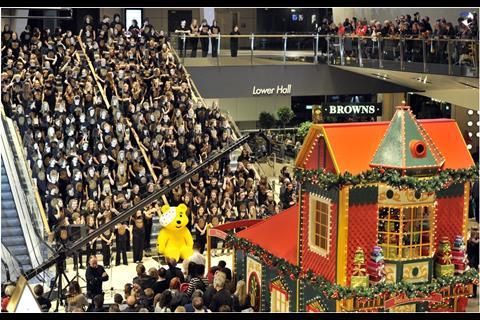

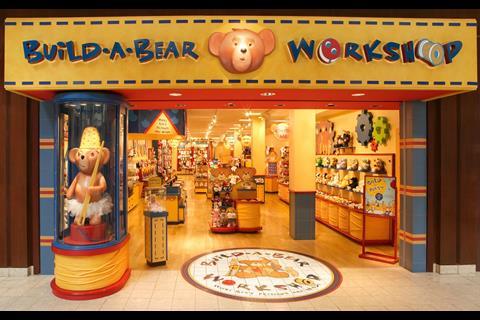
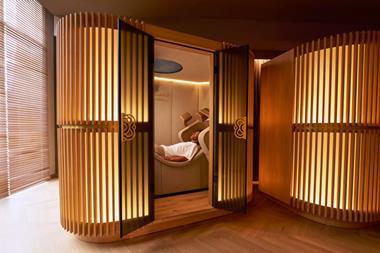

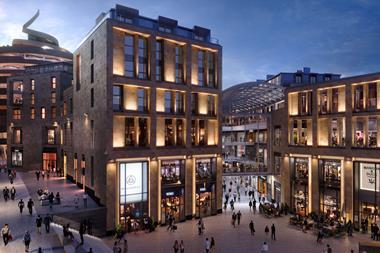


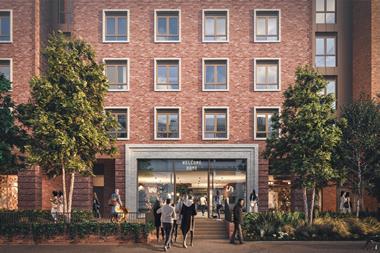
No comments yet